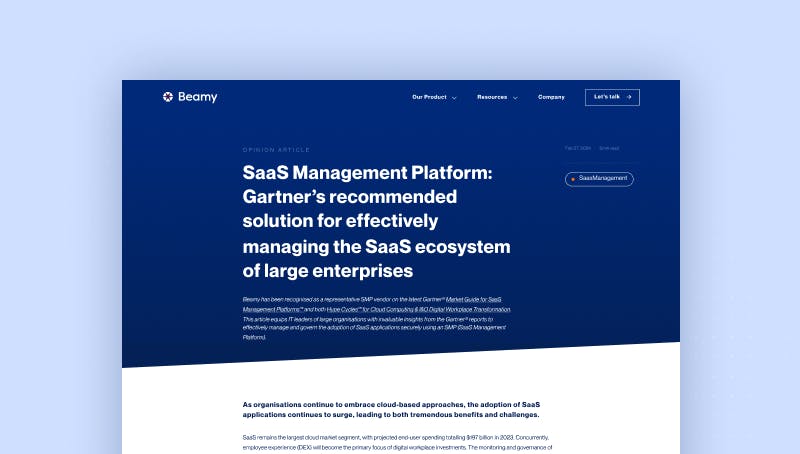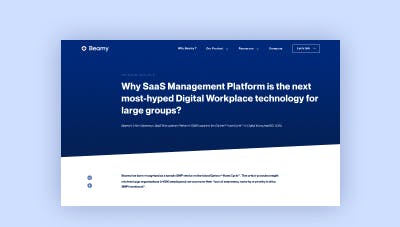For a long time, CIOs of large corporations have perceived the massive growth of Software-as-a-Service (SaaS) as a governance challenge and focused on the “fight against shadow IT”. With an expected annual growth rate of 18% until 2030, this SaaS trend is here to stay and represents a massive challenge for IT departments. The digitalisation process has led to a major shift, from a traditional model where IT supplied all software applications to a model where even the least tech-savvy business units choose their solutions on their own. This has forced CIOs to anticipate a profound cultural transformation. The challenge? Ensuring complete visibility over all IT assets, establishing optimal management of costs and risks, and offering a brand-new digital experience for employees.
How should companies organise their digital transformation to make it an “opportunity to be seized and leveraged”, as Andréa Jacquemin, CEO and Co-founder of Beamy, describes it? To answer this strategic question, CIOs from large companies such as LVMH, L’Oréal, BNP Paribas Asset Management, Schneider Electric, Heineken and Equans have agreed to share their views. Despite the fact that they each work in different industries and environments, there is a consensus on what needs to be addressed in the next 10 years.
The changing relationship between IT & Business Units
The digitalisation of Business Units (BUs) is a tremendous vector for digital transformation, provided that it is carried out in collaboration with
the IT department. Rather than being put off by BUs’ initiatives, Franck Le Moal, Chief Information Officer at LVMH, believes that “a more detailed discussion between every stakeholder is necessary to build the right architecture and standardisation of the IS to support this transition”. A stance shared by Stéphane Pain, Chief Digital & Technology Officer at Heineken France, who believes the growth of SaaS can not only facilitate cultural change at the level of a group but also positively transform the relationship between BUs and the IT department.
BUs need to evolve and take on more responsibility
With the heterogeneity of SaaS solutions, it has become essential for BUs to evolve in how they adopt new solutions. L’Oréal, for instance, has implemented a 100% SaaS strategy “with some exceptions”, with an emphasis on “co-engagement, co-steering and co-development”, as explained by Étienne Bertin, Chief Information Officer at L’Oréal group. As for Fatia-Fatma Balit, Chief Information Officer at BNP Paribas Asset Management, she believes “we need to reinforce the overall understanding of the impact of the democratisation of technology, within both the Business Units and IT teams”.
BUs’ autonomy, orchestrated by the IT department
Transforming governance around SaaS is also a way to address the complex issue of technical debt within the company. BUs must be responsible for the types of data and uses of the applications while avoiding duplicates. “The objective is to give Business Units more autonomy under the IT department’s governance. This is the very essence of the democratisation of technology trend that we are experiencing today”, explains Andréa Jacquemin. Equans, for instance, has set up a virtual network as well as a centralised governance system that aim to leverage IT skills directly where they are within the organisation.




